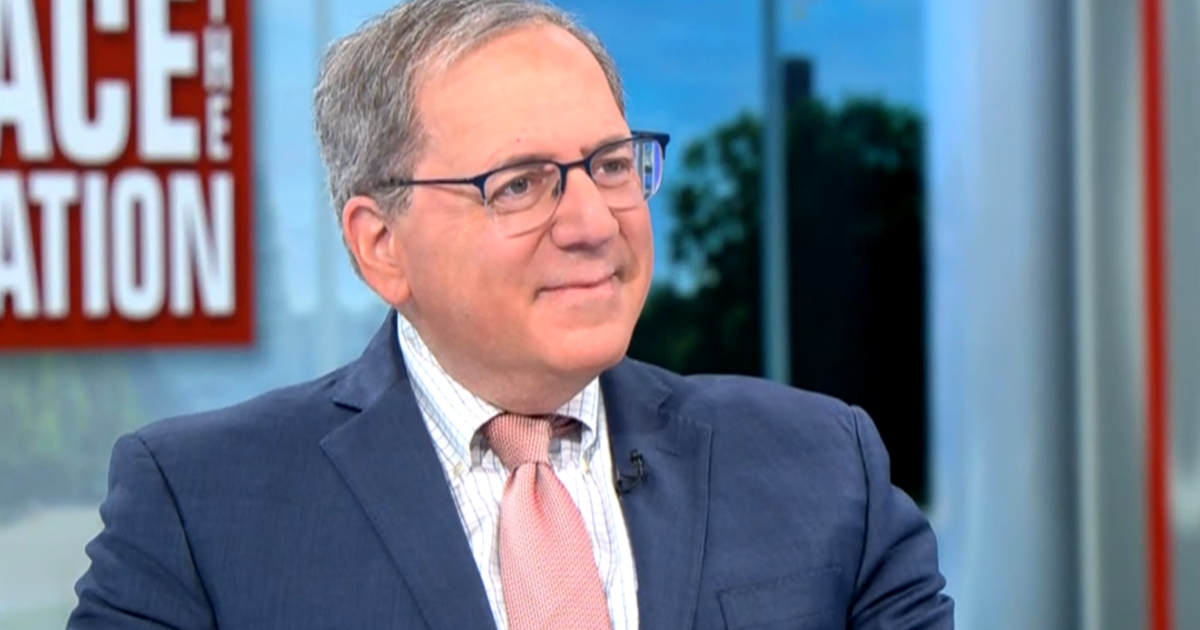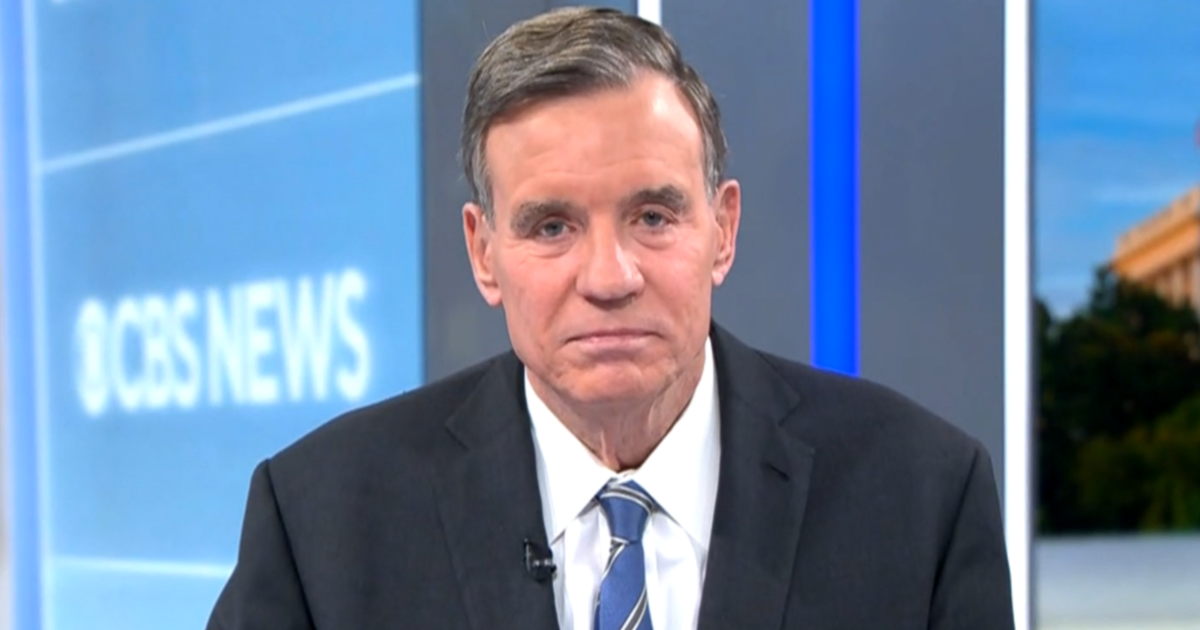Transcript: Scott Gottlieb discusses coronavirus on "Face the Nation," March 7, 2021
The following is a transcript of an interview with former FDA Commissioner Scott Gottlieb that aired March 7, 2021, on "Face the Nation."
MARGARET BRENNAN: We go now to former FDA commissioner Dr. Scott Gottlieb. He sits on the board of Pfizer as well as Illumina, and he joins us from Westport, Connecticut. Good morning to you, Doctor.
DOCTOR SCOTT GOTTLIEB: Good morning.
MARGARET BRENNAN: I thought there was some news there from Dr. Fauci on a few fronts. One of them saying elementary school kids could be vaccinated in the first quarter of 2022. High school kids, possibly by the fall. That seems new.
DR. GOTTLIEB: I think that's right. I think when you're looking at vaccinating children, they're going to look at it from the standpoint of the social environment that the kids are in. So they'll look at it based on kids in high school, kids in middle school, kids in grade school. I think the likelihood that we're going to be ready to vaccinate grade school kids is very unlikely, at least this year. I think that's really a 2022 event probably looking at the studies that need to get done. I think it's probable that we will be vaccinating high school kids at some point this year. One of the vaccines, the Pfizer vaccine, I'm on the board of that company, has already approved down to 16. There's studies underway with all the vaccines looking at younger age populations with their vaccines. And so I think we'll be in a position to be ready to vaccinate a high school age population sometime this fall, maybe not at the start of the school year, but be able to put it into that environment if we do get in trouble with the virus later this fall or the winter. And so you'll be looking at vaccine 9th grade and above, getting it into that high school setting. Then we'll have to contemplate whether we put it in middle schools and junior high schools.
MARGARET BRENNAN: One of the other things he indicated is that there will be soon to be released guidelines on what you can actually do once you're vaccinated. From your perspective, what can you do? Can you go in and eat indoors at a restaurant right now?
DR. GOTTLIEB: Look, I think people who are fully vaccinated have waited the full two weeks after the second dose of the vaccinations are going to feel more confident going out. We need to accommodate that. Public health guidance needs to take into consideration what people want to do. We can't be so far behind the aspirations of the public that the guidance itself gets ignored. I think people are rightly sensing that vulnerability overall is declining right now as you see more and more people get vaccinated, as we have more population-wide immunity from this virus from prior infection as well. So people are going to want to start to do things. They're going to want to start to go out more. And we need to take that into consideration in terms of how we're putting out guidance. Just looking at nursing homes alone. If you look at overall deaths, they are declining. But of the deaths that are occurring, 13% right now are occurring in nursing homes. That's down from 40%. And so that's a real significant indication that the overall vulnerability of the most vulnerable people, those who are succumbing to COVID, is starting to decline quite dramatically as we get more of them vaccinated. Right now, this week, we're probably going to hit about 60% of those- excuse me, 70% of those above the age of 75 are going to be vaccinated, 60% of those above the age of 65, fully almost 25% of adults are going to be vaccinated probably by the end of this week. So we're reducing the overall vulnerability of the population. And final point, I mean, some of the optimism is also being driven by growing science, suggesting that these vaccines, all the vaccines not only prevent COVID disease, prevent symptoms, but also prevent transmission. So they could have a dramatic effect on reducing the overall tenor of the epidemic.
MARGARET BRENNAN: The exception, though, are some of these variants, like those in New York that are showing that they can't be pierced. So what do we do about that? How widespread is this New York variant?
DR. GOTTLIEB: Well, there's two New York variants, so there's 1525, 1526. One of them we're more worried about, the 1526, because it has this mutation that seems to suggest that people who had prior infection could get reinfected and perhaps the vaccines might not be as effective. It still represents a small amount of the overall infection. It's probably going to grow. We've now found it in Georgia. The variant that's going to become the prevalent strain here in the United States is the B.1.1.7, that UK variant. Right now, it's 40% of infections in Florida, 30% in California. That's going to become the most prevalent strain. Now, that strain, when it does become prevalent, probably is going to crowd out some of these other strains, the 1.351 in South Africa, the P.1 variant in Brazil. There's probably some crossover between the immunity you get from B.1.1.7 and immunity against those other strains. But that's going to probably cause infections to tick back up. I don't think we're going to see another surge of infection this spring, but we might see a plateauing before we see continued declines again.
MARGARET BRENNAN: You know, we look back at some of your remarks from a year ago. You've been pretty on the money with your predictions. But at this time a year ago, we weren't wearing masks. We weren't told to until April by the federal government. Now we're being asked to continue wearing them. From where you sit, is that the biggest mistake? I mean, how would you grade our performance as a country?
DR. GOTTLIEB: I think the masks are the single biggest mistake because it was the easiest intervention that we could have reached for early to prevent spread. I think this was a real failure to detect all of the asymptomatic spread. We overestimated the role of fomites, of contaminated surfaces in spreading this virus, because we weren't recognizing all the spread that was happening from asymptomatic individuals, because we weren't doing good tracking and tracing. We were using a flu-model to detect COVID spread and it wasn't applicable. So CDC was very slow to recognize this. If we had recognized earlier all this spread through asymptomatic transmission and the fact that this is spreading not just through droplets but also aerosolization, enclosed environments, we probably would have recommended masks and high-quality masks much earlier. So that was probably the single biggest mistake, largely because it was a single easiest intervention that we could have reached for early.
MARGARET BRENNAN: Dr. Gottlieb, thank you nav- for helping us navigate this over the past year and in the weeks ahead. We'll be back in a moment.



